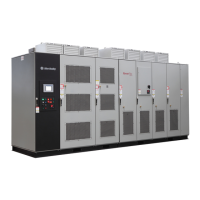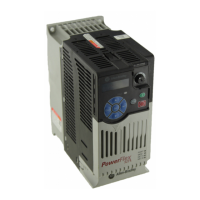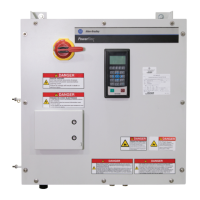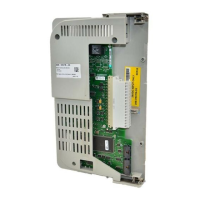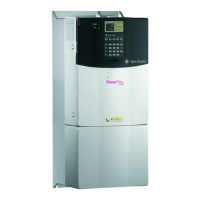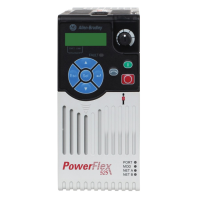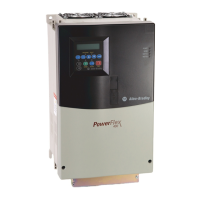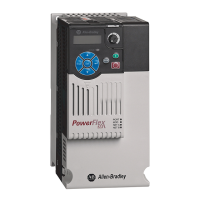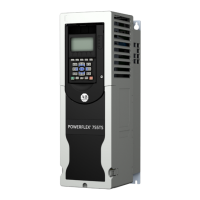2-40 Current Limit
Current Limit [Current Lmt Sel]
[Current Lmt Val]
[Current Lmt Gain]
There are 6 ways that the drive can protect itself from overcurrent or
overload situations:
• Instantaneous Overcurrent trip
• Software Instantaneous Trip
• Software Current Limit
• Overload Protection IT
• Heatsink temperature protection
• Thermal Manager
A. Instantaneous Overcurrent - This is a feature that instantaneously trips or
faults the drive if the output current exceeds this value. The value is fixed
by hardware and is typically 250% of drive rated amps. The Fault code
for this feature is F12 “HW Overcurrent.” This feature cannot be
defeated or mitigated.
B. Software Instantaneous Trip - If it is determined that the hardware
overcurrent levels are too high for certain drives (below certain output
frequencies), an additional software overcurrent trip is invoked. When
the drive is being operated below the given frequency (fixed and stored
in drive memory) the software overcurrent trip level is set to a value less
than the hardware overcurrent level. This offers additional protection to
drives running at very low output frequencies, if needed. If the reduced
current limit level is exceeded, an F36 “SW Overcurrent” fault is
generated.
C. Software Current Limit - This is a software feature that selectively faults
the drive or attempts to reduce current by folding back output voltage
and frequency if the output current exceeds this value. The [Current Lmt
Val] parameter is programmable between approximately 25% and 150%
of drive rating. The reaction to exceeding this value is programmable
with [Shear Pin Fault]. Enabling this parameter creates an F63 “Shear
Pin Fault.” Disabling this parameter causes the drive to use Volts/Hz fold
back to try and reduce load.
The frequency adjust or fold back operation consists of two modes. In
the primary mode of current limit operation, motor phase current is
sampled and compared to the Current Limit setting in the [Current Lmt
Val]. If a current “error” exists, error is scaled by an integral gain and fed
to the integrator. The output of this integrator is summed with the
proportional term and the active speed mode component to adjust the
output frequency and the commanded voltage. The second mode of
current limit operation is invoked when a frequency limit has been
reached and current limit continues to be active. At this point, a current
regulator is activated to adjust the output voltage to limit the current.
When the current limit condition ceases or the output voltage of the
current regulator attempts to exceed the open loop voltage commands,
control is transferred to the primary current limit mode or normal ramp
operation.
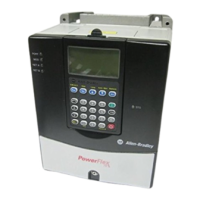
